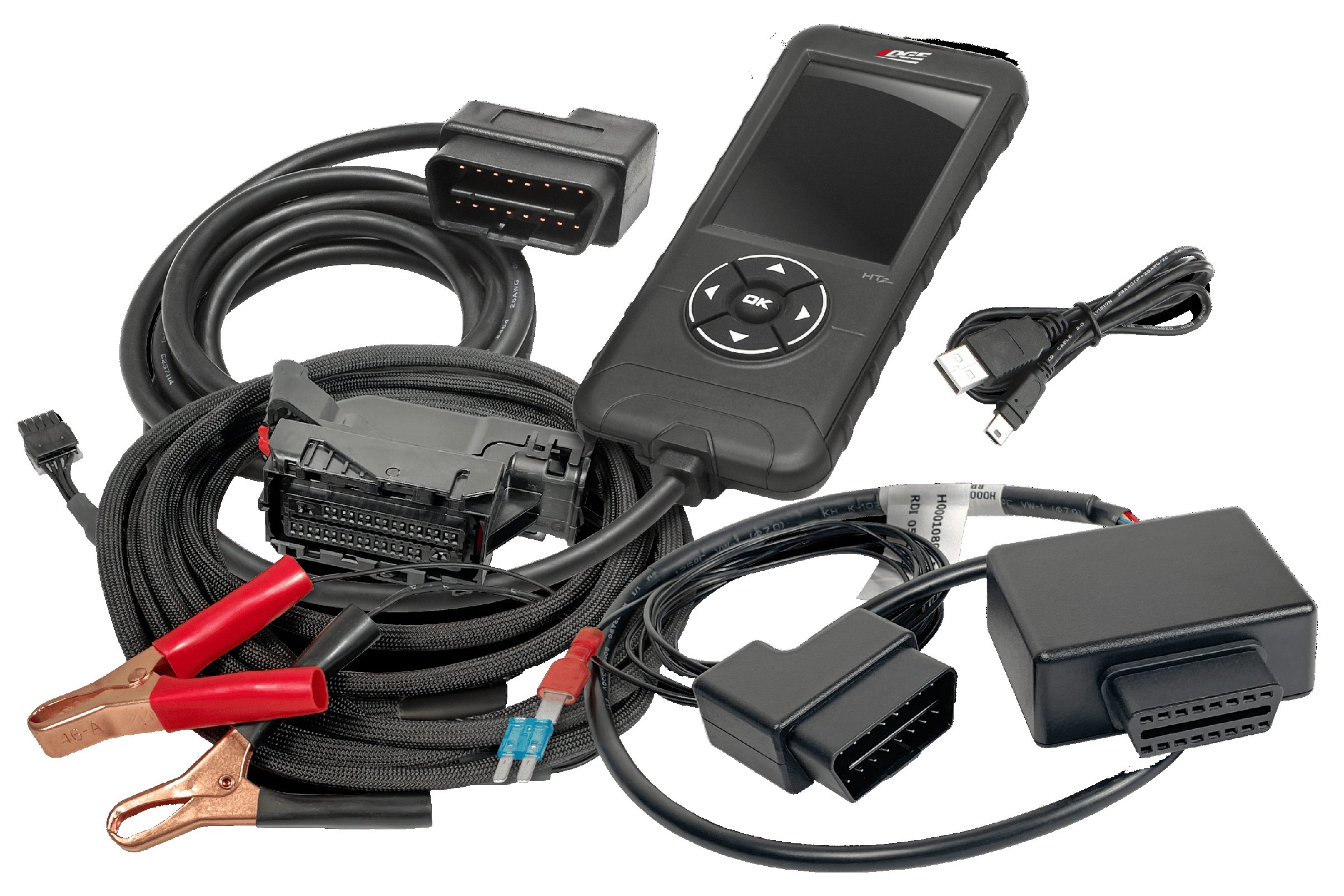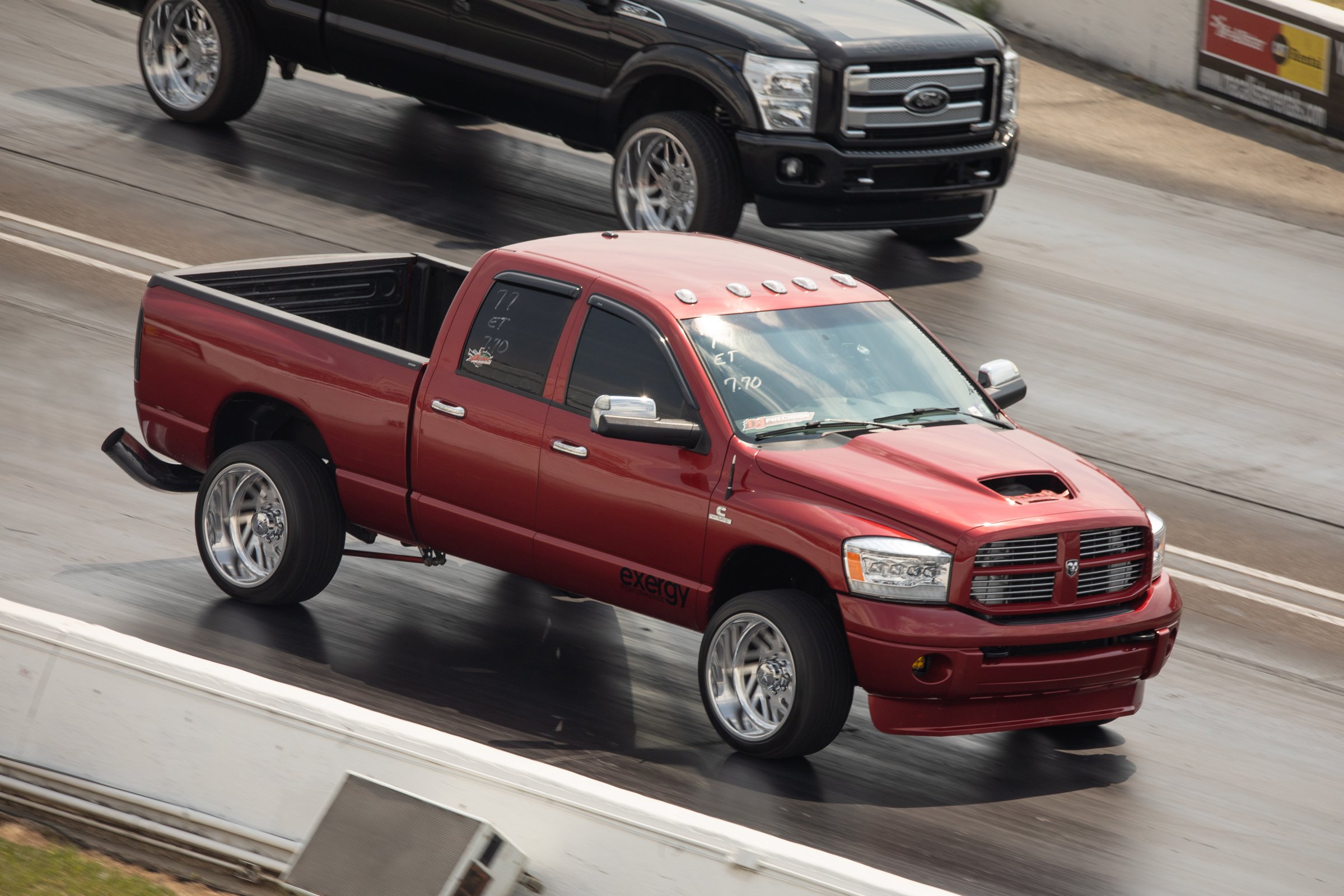When upgrading your truck, is the torque converter on your list of things to do? For us, it is, again, and our story about selecting a Cummins torque converter starts with a ’95 Dodge that weighs 6,700 pounds. As far as engine upgrades, it uses Scheid Diesel 5×0.018-inch injectors and an Industrial Injection 69mm SX-E turbo. The truck currently runs 13.90 seconds at 98 mph in the quarter mile. That’s not too shabby given the truck’s weight and power, but that isn’t the whole story. Each time we launched the truck, we didn’t have that push-your-head through-the-headrest feeling, and we were certain the reason was we needed a different torque converter.

The folks at Brown’s Diesel helped us with our converter swap. The first step was draining the fluid, which still looked great.
Cummins Torque Converter Testing
Before we started this article, we were working with the loosest converter we could get from Goerend Transmission Inc. An engine’s torque, as well as other factors, all combine to determine how a converter will work with a given combination. One of the main factors of how a converter “stalls” is how the stator and the turbine in the converter react with each other. The converter we were utilizing was a “V10/V10” converter from Goerend, which meant it was basically a V10 gas truck converter with a billet front cover and lock-up clutches (which makes it essentially zero-percent slip). This meant we could almost instantly spool up the turbo, and then lock everything up for full power. Sounds great, right?

Technicians Tyrel Burna and Cesar Ibarra dropped our transmission out, which had been previously rebuilt by Brown’s Diesel to handle more than 1,000 horsepower, as well as the abuses of the dragstrip.
In practicality, ultra-loose converters may not be the best idea — as we found out. They slip like crazy at 2,000 to 3,000 rpm, generate a bunch of heat, and well, just don’t put power down in a low-RPM situation without a lock-up. When we get 100-percent lockup the engine RPM and boost dropped substantially. At launch with our Ram, even leaving at 3,000 rpm, we could only generate 0.73G and a 2.11 60-foot time. It wasn’t that the converter was bad, if we could spin the engine to 5,000 rpm it might have been the perfect converter. But for our application, it just wasn’t optimal.

Although externally the same, the new converter will still allow our large-ish 69mm turbo to spool up off the line and also have a much lower stall speed, less slip, and higher torque multiplication.
Goerend to the Rescue (Again)
To handle our torque converter swap, we once again talked to Goerend and explained our issue. We felt there must have been converter advancements since big turbo trucks started using V10/V10 units. They explained that there has been and cited one of their “DA” converters. The DA converter would be loose up to around 1,900 to 2,000 rpm (which is when our 69 mm starts to make boost) yet tighten up by 3,000 rpm — putting a lot more power on the ground. Goerend informed us the new converter would also have a very high torque multiplication factor. It sounded perfect.
Removal And Installation
Changing a Cummins torque converter is not something that is done on a whim, and choosing correctly can have very beneficial results. Since the transmission needs to be removed for this swap, if you rely on a shop, you can plan on this being roughly a $700 to $1,000 proposition in labor alone.

Converter bolts have the strenuous job of helping couple the engine and transmission together, so red Loctite was applied to make sure they wouldn’t back out under stress or vibration.
As we had proven with prior testing, our seasoned V10/V10 converter couldn’t match up with our engine’s current RPM and fueling. As a band-aid fix, we previously installed a set of 4,000-rpm governor springs in the fuel pump, but the fueling was already diminishing at about 3,300 rpm. During each dyno pull, the engine instantly flashed to 3,300 rpm and stayed there. By the end of the pull, only 266 horsepower had actually gotten to the ground. This explained our slow 60-foot times and weak launch. Once we had the new converter installed, it was a different story. But before we hit the dyno, everyone at the dyno shop had different guesses about how much power it would pick up, and the guesses ranged from 20 to 80 horsepower. In the end, the truck put down 348 rwhp. That is a gain of 82-horsepower.

Our Goerend DA converter helped deliver a ton more power than the older technology V10/V10 unit, nearly 100 horsepower more.
That was only half the story though, as we felt the real improvement would come when we hit the track. Admittedly the truck was slower to spool the turbo — it took about 4 to 5 seconds from off idle. Once it was at around 2,000 rpm, the turbo wound up. We tried launching at 2,200 rpm and while the launch felt good, the next launch at 2,500 rpm and roughly 15 psi felt even better. The truck rocketed off the line with the tires slightly spinning to a 0.92G reading. The 60-foot time was also much improved, from 2.11 seconds to 1.93 seconds. The 0-60 mph times also went from 5.4 seconds to 4.9 seconds.

From the dyno (where it picked up 82 hp) to real-world acceleration testing (where it went 0-60 mph half a second quicker), our new lower-stall converter performed better in almost every way than our “old tech” converter.
This improvement extended all the way through the quarter mile, as we ran a new best of 13.48 seconds at 99 mph. Although it was a lot of work, it highlights how important it is to work with a transmission company to select the right torque converter based on a specific elevation, turbo, and vehicle usage. Our newer, better-suited Cummins torque converter is something we can enjoy every time we hit the throttle — whether towing, racing, or just cruising down the freeway.



